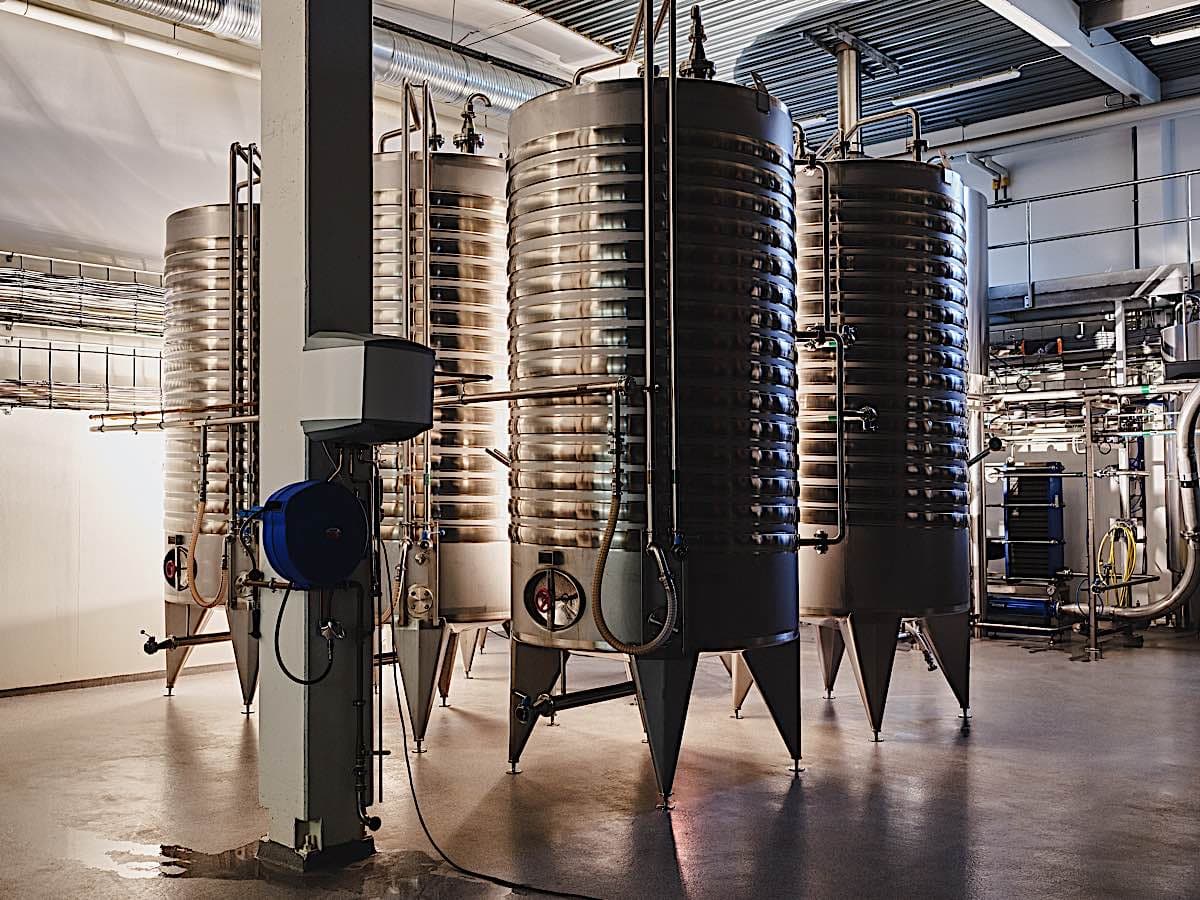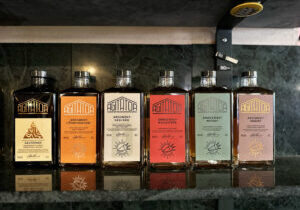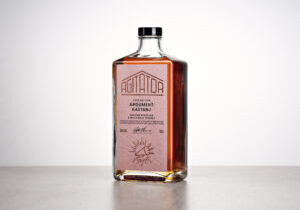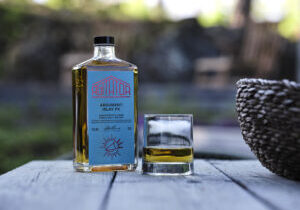
THIS IS WHY YEAST IS SO IMPORTANT FOR THE FLAVOUR
The earliest records of how yeast affect sugar are from China, dated approximately 800 B.C. Exactly when this discovery was made is unknown, but as is so often the case, it was probably a coincidence. Most likely, a sugary liquid was left outside, and attacked by wild yeast. Towards the end of the 19th century, the first controlled yeast strain was produced. This was a milestone, since it meant that the result could be controlled and produce a uniform product with each production.
This is a is brief description of how the yeast and the fermentation works in a whisky distillery: Once the grain has been dried and milled, it is time for the yeast to get to work. The starch in the grain is leached from the grain with warm water during the mashing process. The sugary water is poured into mash tuns, where yeast is added. The image above shows our mash tuns. During the fermentation process, the yeast converts sugar into alcohol and carbon dioxide.
Different yeast strains work best at different temperatures. But above 34°C, the yeast becomes less active and starts to die, so it is important to keep an eye on the temperature during fermentation. We circulate water through ducts on the outside of our mash tuns, and in this way control the temperature.
To us, the importance of yeast goes far beyond simply converting sugar into alcohol. The yeast also affords a certain character to the distillate. This is because the fermentation process also produces esters that give the mash a distinct fruitiness. So, depending on which whisky you aim to produce, you must select the correct yeast.
To breed and nourish a living yeast culture takes a little effort and care, which is the reason many distilleries prefer working with dried yeast. It needs no extra equipment and can be poured straight into the wort. It also delivers the same result every time. In the past, it wasn’t unusual for distilleries to buy yeast straight from a nearby brewery, but as many breweries closed down, the use of brewer’s yeast for distillation was abandoned. There are three main differences between distiller’s yeast and brewer’s yeast:
- Distiller’s yeast can withstand higher temperatures than brewer’s yeast.
- Distiller’s yeast can ferment more complex sugars than brewer’s yeast.
- Distiller’s yeast can withstand a higher alcohol content than brewer’s yeast.
Some distillers use baker’s yeast in their production. It is considered to give a lot of flavour to the distillate but also to be less effective in converting sugar into alcohol.
At Agitator, we use different yeast cultures for different recipes. It sometimes happens that we mix two different cultures (distiller’s yeast and brewer’s yeast) in order to achieve the desired flavour profile.
We let the mash ferment during seven days. This is far longer than most other distilleries. Customary is a fermentation time of 60-72 hours. Shortening the fermentation time does keep costs down. But to us, a longer fermentation time means that we can control the growth phase of the yeast. This, in turn, produces more esters, contributing to the fruity flavour of our distillate. When the fermentation is complete, we have reached an alcohol content of about 10 %, and we have created a mash ready to be distilled.
Being one of only three ingredients, we are convinced that yeast is important to the final result and we will ferment for as long as it takes to achieve the optimal taste experience!









